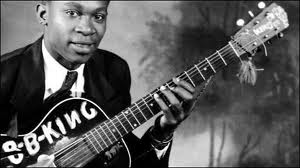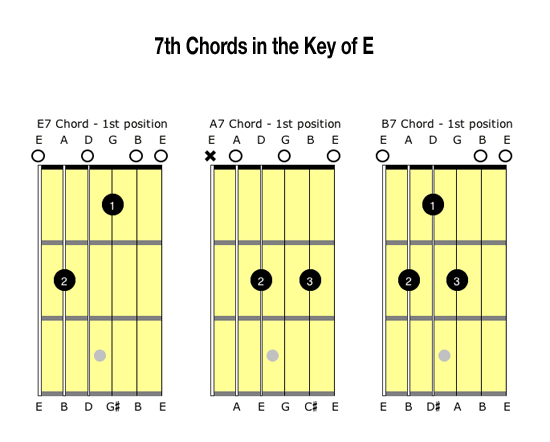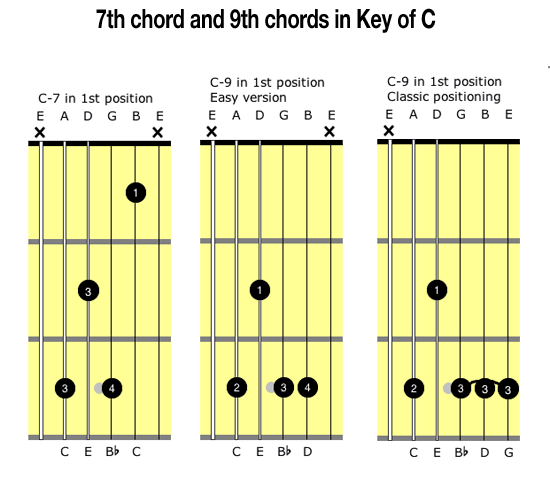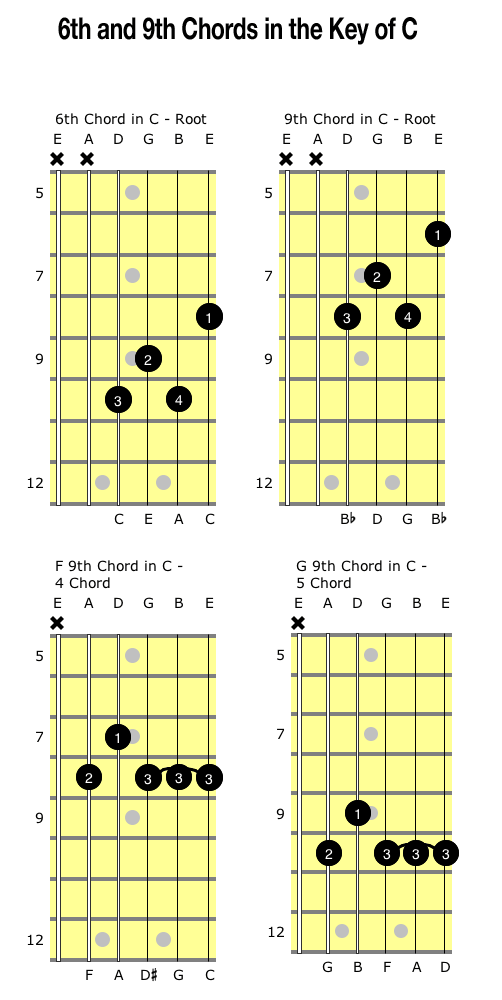 There really is no such thing as a “blues chord” per se. The chord names and structure were around long before the blues was even invented. You can find them in any basic music theory book.
There really is no such thing as a “blues chord” per se. The chord names and structure were around long before the blues was even invented. You can find them in any basic music theory book.
But the fact is, some chords work better in blues than others. And going even further, some chords work better in certain types of blues than others. Using 6th chords and 9th chords simply work better when you are talking about slow blues or jazzier blues. It’s not that other chords don’t work. It’s that they just don’t work as well.
So what does this mean for an aspiring blues guitarist?
Well it certainly means, that sooner or later, you’ll want to learn some jazzier chords if you want to be able to play certain types of blues. You can get by with 7th chords for now, but sooner or later you’ll have to face the music… sorry I couldn’t resist.
But the good news is… these fancier chords are really not that much harder to play. If you can play a 7th chord you can play a 9th chord… and if you can play a major 7th chord you can play a 6th chord.
So What Do I Mean By 6th and 9th Chords… And What Do They Sound Like?
If you’ve listened to just about any slow blues by B.B. King you’ve been hearing 9th chords. Here’s a video that will serve as a good example.
Fingering for Blues Chords
A great place to start for learning blues chords is with Seventh Chords. They are pretty easy and are universal for all blues… just about. Here’s a video that shows how to play a 7th Chord in E.
Here’s a diagram of those chords.

Of course, these fingerings can be moved up the neck to make chords for other keys. That means you will have to Barre the chord. We’ll talk more about that later but basically that just means you’ll use your first finger to cover the height of the fretboard and you’ll use your other fingers to finger the notes of the chord.
Ninth Chords
OK let’s move quickly to 9th chords. These are bread-and-butter chords in the blues and you hear them everywhere.
You make a 9th chord by adding the 9th note of the scale. How can there be a 9th note when there are only 8 notes in a diatonic scale? What were are doing is actually adding another “2” note. In other words, the 2 note after the octave of the root note.
Here’s a diagram that should help for the key of C.

And notice the beauty of learning the easy 9th chord to start (the one in the middle). It’s just as easy to play as the 7th chord. If you can play the 7th chord here, you can be playing the “easy” 9th chord immediately. Give it a try.
Of course, after a while it’s good to learn the classic fingering for the 9th chord. Why? Because there are lots of other chords that are based on it, or similar to it.
OK Now For The Sixth Chord
Actually we’ll be learning two chords in one here. Because the 6th chord is exactly the same fingering as the 9th chord for the same key. It’s just moved down 2 frets.

Actually I could have shown you this version of the 9th chord first but this way you get 2 for the price of one. Cool huh?
Also… Notice that a 6th chord in A is the same as a Major 7th chord in D. Another 2-for-the-price-of-1 surprise.
I’ve also included the 9th chords for the key of C so you can play the 4th and 5th for the following jam track. Have a ball!




The fingering for that C-7 is a bit suspicious 😉